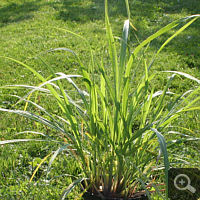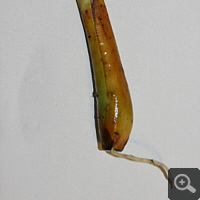Lemon Grass (Cymbopogon citratus)
Overview
The Lemon Grass (Cymbopogon citratus) is a member of the commercial few utilised Grass family (Poaceae). In the main, its fame derives from its use as spice within the Asian cuisine (especially Indonesia and Thailand). Furthermore its essential oil, which contains to 80% the lemon-scented citral, is used by the cosmetic industry.
Meanwhile the Lemon Grass is evermore offered in nurseries or on weekly markets, but you can also raise the Lemon Grass from sprouts, which are offered sometimes in the vegetable section of supermarkets.
Description
The perennial plant is relatively fast-growing and tends to an upthrust. The Lemon Grass produces up to one metre high sprouts, which consist of small, above pendently leaves. Blossoms are never produced in our country.
Culture
The culture of the Lemon Grass is simple. The right location is outdoors as of the icemen, the non-hardy plant should spend the remaining time of the year at a light and rather warm location. There are no special demands concerning the soil. Normal, slight acidic potting soil is sufficient. Where necessary, that can be mixed with some sand. Especially in summer greater tufts show a relative high evaporation and thereby a high water demand.
Experiences
The propagation of the Lemon Grass is simple. Whole sprouts are to be found often packed as spice in the vegetable section of large supermarkets. Simply give a sprout in a glass with a few centimetres water at a light but protected against direct sunlight place. After several weeks the sprout produces its first roots and can be planted in soil as soon as the roots have a length of several centimetres. The plant grows up to increasing tufts during the next years.
The bought or yourself raised Lemon Grass can be well used as spice in cuisine. Cut off a sprout with a sharp knife circa one centimetre above the soil. The remaining part will soon sprout again and thereby ensure survival in the long run. In principle the whole sprout can be used. But also during cooking the leaves remain quite hard so that I discard them. The succulent base works best, before the leaves arise from it. Cut the base similar to a salad onion in finest slices and add them to the dish first at the end of cooking. Be careful in dosage. The Lemon Grass has an intensive taste!
2011
In February I put numerous bought sprouts in a glass with water. Circa two thirds of the sprouts produced within six weeks the first roots. I planted them, when the roots had a length of circa 5 cm, in soil. Since then the sprouts are strongly grown.


